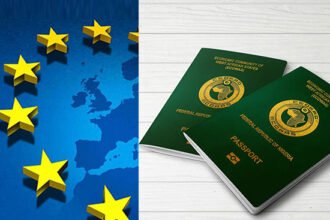In an increasingly interconnected world, companies often need to move skilled employees across borders to support international projects, transfer knowledge, and build consistent company culture. The European Union (EU), recognizing the importance of intra-corporate mobility, introduced the Intra-Corporate Transfer (ICT) permit to facilitate the temporary relocation of managers, specialists, and trainee employees from third countries to EU Member States within multinational companies.
The EU ICT Directive (2014/66/EU) harmonizes the rules for admitting non-EU nationals for the purpose of intra-corporate transfer, making it easier for multinational corporations to deploy their staff across several EU countries without undergoing multiple, country-specific procedures. The ICT permit is particularly valuable for global companies with regional headquarters or operations in the EU, allowing for smoother mobility within the internal market.
This article offers a detailed guide to EU ICT permits: what they are, who they apply to, how to apply, what conditions must be met, how long they last, and the rights of the transferees. Whether you’re an HR manager, an immigration consultant, or a professional considering an international move, this guide will help you understand the complexities and benefits of the ICT scheme.
What Is an EU ICT Permit?
The Intra-Corporate Transfer permit is a temporary residence and work authorization for non-EU nationals who are transferred to an EU-based entity of the same company group. It is applicable to three specific roles:
-
Managers – Personnel who manage a department, division, or the entire operation, and have authority over other employees.
-
Specialists – Individuals with advanced expertise, technical knowledge, or skills essential to the company’s services or operations.
-
Trainee Employees – Employees with a university degree who are transferred for the purpose of career development or managerial training.
The ICT permit is valid for transfers longer than 90 days. For shorter business travel or assignments, different visa categories may apply, such as Schengen short-stay visas.
Purpose of the ICT Directive
The EU ICT Directive aims to:
-
Facilitate the entry and stay of key company staff from third countries.
-
Establish a single, streamlined procedure for transferring employees within multinational groups.
-
Allow intra-EU mobility, so that transferees can move and work in multiple EU Member States under simplified conditions.
-
Increase the EU’s competitiveness and attractiveness for global business operations.
The ICT permit reflects the EU’s broader agenda of attracting highly skilled talent while maintaining control over labor migration.
Countries That Apply the ICT Directive
While most EU countries apply the ICT Directive, some have opt-outs or implement alternative schemes. As of now, the following countries apply the ICT Directive:
-
Austria
-
Belgium
-
Bulgaria
-
Croatia
-
Cyprus
-
Czech Republic
-
Estonia
-
Finland
-
France
-
Germany
-
Greece
-
Hungary
-
Italy
-
Latvia
-
Lithuania
-
Luxembourg
-
Malta
-
Netherlands
-
Poland
-
Portugal
-
Romania
-
Slovakia
-
Slovenia
-
Spain
-
Sweden
Denmark and Ireland do not participate in the Directive and have their own national ICT schemes.
Eligibility Criteria
To apply for an EU ICT permit, the applicant and the host company must meet specific eligibility criteria. These are harmonized across Member States, but slight procedural variations may exist depending on the country.
Applicant Requirements
-
Must be a non-EU/EEA national.
-
Must be employed by a company outside the EU and transferred to an entity within the EU group.
-
Must have worked for the sending company for at least 3 to 12 months (varies by country) before the transfer.
-
Must fall into one of the eligible categories: manager, specialist, or trainee.
-
Must have a valid employment contract and assignment letter from the home company.
-
Must provide proof of qualifications for the position, especially for specialists and trainees.
-
Must have sufficient health insurance and financial means.
Host Company Requirements
-
Must be part of the same corporate group as the sending employer.
-
Must provide clear documentation showing the corporate relationship (ownership, structure, etc.).
-
Must comply with labor laws, taxation, and social security regulations of the host country.
-
Must commit to returning the transferee after the permit expires, unless other residency options are pursued.
Application Process
The application for an ICT permit is typically initiated before the employee arrives in the EU, though exact steps and timelines may vary.
Step 1: Prepare Documentation
Documents typically required include:
-
Valid passport
-
Assignment letter from sending employer
-
Employment contract (home and host entities)
-
Corporate proof (group structure, registration documents)
-
CV and qualification certificates
-
Proof of accommodation in the EU
-
Health insurance coverage
-
Criminal record check (in some countries)
All documents not in the official language of the host country must be translated and legalized/apostilled.
Step 2: Submit the Application
The application is submitted to the relevant immigration authority in the destination country. Some countries allow online submission; others require physical filing at embassies or consulates.
Step 3: Processing Time
Processing time varies but is generally 30 to 90 days. Some countries have expedited procedures for multinational companies with recognized status.
Step 4: Residence Permit Issuance
Once approved, the applicant receives a long-stay visa or entry permit, followed by a residence card upon arrival. This card serves as both a work and residence authorization.
Duration of the ICT Permit
-
Managers and specialists: Up to 3 years
-
Trainees: Up to 1 year
Permits are non-renewable under ICT rules, but after expiration, individuals may switch to national permits, if eligible, or must leave the EU.
A cooling-off period may apply, during which the individual cannot apply for another ICT permit within a certain timeframe (usually 6 months).
Intra-EU Mobility: One of the Key Advantages
One of the most important benefits of the EU ICT permit is mobility across Member States. This means a person who has been granted an ICT permit in one EU country may work in other EU countries under simplified rules.
There are two main types of mobility:
Short-Term Mobility (Up to 90 Days)
-
ICT permit holders can work in a second EU Member State without needing a new permit.
-
Notification must be made to the authorities of the second country.
Long-Term Mobility (Over 90 Days)
-
Requires a mobility application to the second country.
-
A simplified procedure is used, leveraging the original ICT permit.
-
The second country cannot re-assess the full eligibility but may perform additional checks.
This intra-EU mobility is a unique advantage over national permits and especially beneficial for companies operating across several EU locations.
Rights of ICT Permit Holders
EU ICT permit holders enjoy various rights and protections under EU and national laws:
-
Right to work at the host company for the duration of the permit.
-
Intra-EU mobility rights as described above.
-
Family reunification rights: spouses and dependent children may accompany the transferee and often have access to the labor market.
-
Equal treatment with host-country nationals in terms of working conditions, education access, and recognition of qualifications.
However, they do not have direct access to:
-
The EU long-term resident status
-
Permanent residence via the ICT permit route
-
Changing employers or sectors during the validity of the permit
Differences Between ICT Permits and National Work Permits
| Feature | ICT Permit | National Work Permit |
|---|---|---|
| Target Group | Intra-group transferees | Local hires or general work migrants |
| Mobility | Allows intra-EU mobility | Generally limited to one country |
| Duration | Max 1–3 years | May be renewable indefinitely |
| Employer | Must be intra-corporate group | Any employer |
| Application Complexity | Moderately streamlined | Depends on national rules |
Challenges in Practice
While the ICT Directive simplifies many aspects of intra-EU staff transfers, challenges remain:
-
Varying implementation across Member States leads to inconsistencies in procedures and documentation.
-
Delays in mobility notifications and approvals in second Member States.
-
Bureaucratic hurdles like translation, legalization, and in-person appointments.
-
Lack of awareness among HR departments about ICT-specific advantages and obligations.
Companies must work closely with immigration professionals or consultants to ensure compliance and smooth transfers.
Transitioning from ICT to Other Statuses
Since the ICT permit is non-renewable, many transferees may wish to switch to other residence categories for long-term opportunities, such as:
-
EU Blue Card
-
National employment permits
-
Residence permits for family reasons
However, this transition may require the employee to exit the country and apply from abroad, depending on national rules. Strategic planning is important if long-term stay is anticipated.
ICT Permit vs. EU Blue Card
Many multinational companies consider both ICT and EU Blue Card schemes. While the EU Blue Card is aimed at high-skilled workers coming directly to the EU labor market, the ICT is focused on internal company mobility.
| Feature | ICT Permit | EU Blue Card |
|---|---|---|
| Employer | Intra-company transfer only | Any qualified EU employer |
| Duration | Max 1–3 years | Renewable indefinitely |
| Mobility | Intra-EU mobility for business | Limited, requires reapplication |
| Long-Term Stay | Not allowed | Leads to permanent residency |
| Changing Jobs | Not allowed | Allowed after initial period |
Both have strategic uses depending on the long-term goals of the company and the employee.
Best Practices for Employers
-
Plan early: Start the ICT permit application well in advance of the planned relocation.
-
Use internal mobility planning: Coordinate across HR departments in both sending and receiving countries.
-
Ensure compliance: Be aware of salary benchmarks, labor laws, and social contributions.
-
Assist with family relocation: Help employees manage family reunification and integration.
-
Document management: Keep thorough records of assignments, job roles, and permit durations.
Conclusion
The EU ICT permit offers a powerful tool for multinational corporations to move talent within their global operations while maintaining compliance with EU laws. It simplifies the previously complex and fragmented immigration landscape for intra-company moves, promotes knowledge transfer, and strengthens the EU’s position as a global business hub.
Understanding the eligibility criteria, application process, rights, limitations, and opportunities for mobility under the ICT scheme is essential for both employers and transferees. By leveraging the advantages of the ICT permit strategically, companies can achieve their operational goals while offering valuable international experience to their employees.
Whether you’re a professional aiming to take on a global assignment or a business managing cross-border mobility, mastering the EU ICT permit process is a smart investment in your international future.



